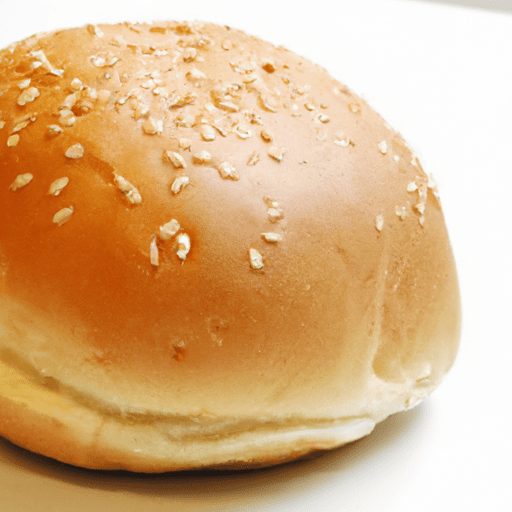The Perfect Hamburger Roll: A Culinary Delight
When it comes to a delicious hamburger, the star of the show isn’t just the patty, but the hamburger roll that holds it all together. The soft and slightly sweet bread makes every bite a delightful experience. In this blog post, we explore the hamburger roll in all its glory – its taste, common uses, nutritional value, and interesting facts that might just surprise you!
The Taste of Heaven
A good hamburger roll is like a slice of heaven for your taste buds. It’s soft, yet slightly chewy, with a delicate hint of sweetness. The outer crust is often lightly toasted, adding a subtle crunch that complements the juicy burger perfectly. The paradoxical combination of softness and slight resistance creates an enjoyable textural experience with every bite.
Common Uses in Cooking
The hamburger roll has long been a staple in cookouts, barbecues, and restaurant menus worldwide. Its versatility extends beyond traditional burgers. They often serve as the foundation for various mouthwatering sandwiches, sliders, and even breakfast delights like bacon and egg rolls. The softness of the roll allows it to absorb the savory juices and flavors from the fillings, enhancing the overall taste and experience.
Nutritional Value
While the hamburger roll is undeniably delicious, it’s important to consider its nutritional value. On average, a standard-sized hamburger roll contains around 200-250 calories. It’s a significant source of carbohydrates, providing the energy needed for our daily activities. These rolls often contain moderate amounts of protein and essential minerals such as iron and calcium.
When choosing the healthiest option, it’s wise to opt for whole wheat or whole grain hamburger rolls. Not only do these provide more dietary fiber and nutrients, but they can also add a nutty flavor, taking your burger experience to a whole new level.
A Slice of History
The hamburger roll has a fascinating history intertwined with the evolution of the burger itself. Historians credit the origins of the hamburger sandwich to the city of Hamburg in Germany. However, it wasn’t until the late 1800s that the concept of placing the burger between two slices of bread took off in America.
One of the earliest mentions of a hamburger served on a roll dates back to 1904, in a small family-based restaurant in New Haven, Connecticut. This innovative idea quickly gained popularity, spreading across the United States and eventually becoming a global phenomenon. Today, the hamburger roll is an integral component of an iconic American dish enjoyed by millions worldwide.
Fun Facts about Hamburger Rolls
Here are a few interesting tidbits about hamburger rolls to impress your friends during your next barbecue:
- The world’s largest hamburger ever created weighed a whopping 2,014 pounds, and it was served on a specially made giant hamburger roll.
- In the United States, July 28th is celebrated as National Hamburger Day.
- The term “bun” is often used interchangeably with “roll” when referring to hamburger bread, but some purists argue that a bun is slightly sweeter and softer than a roll.
Conclusion
The humble hamburger roll plays a crucial role in transforming a tasty patty into a culinary masterpiece. Its softness, delicate sweetness, and ability to absorb flavors make it the perfect partner for your favorite burgers and sandwiches. So, the next time you bite into a juicy burger, take a moment to appreciate the often overlooked hero – the hamburger roll!
Hamburger Rolls
Origin: The hamburger roll, also known as a hamburger bun, originated in the United States. It was created to specifically hold and complement the classic ground beef patty known as a hamburger.
Common Uses: Hamburger rolls are primarily used as a base for hamburgers, sandwiching together the patty and other accompaniments such as lettuce, tomatoes, cheese, onions, and condiments like ketchup or mayonnaise. They are also used for popular burger variations like cheeseburgers, veggie burgers, chicken burgers, or fish burgers.
Nutritional Benefits: Hamburger rolls provide a source of carbohydrates, which are the body’s primary source of energy. They typically contain added vitamins and minerals, such as iron, niacin, thiamin, and riboflavin, which are important for overall health.
Unique Properties: Hamburger rolls are shaped specifically to hold the contents of a burger without falling apart or becoming too soggy. They are generally round, soft, and have a slightly sweet flavor. Some variations may have sesame seeds sprinkled on top.
Historical Significance: In the late 1800s, the hamburger gained popularity in America, but it was commonly served without a bun. It wasn’t until the early 1900s that the hamburger roll was introduced, making it easier to eat and more enjoyable. Today, the hamburger roll is an essential component of the classic American burger.




Use the share button below if you liked it.
It makes me smile, when I see it.